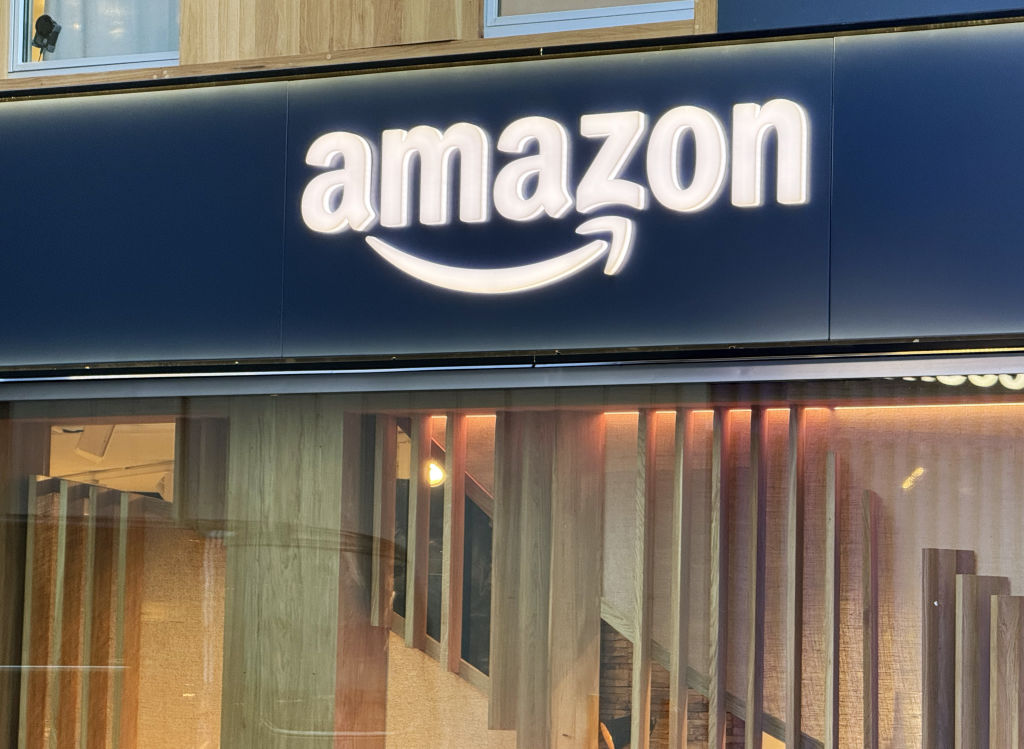How Amazon Stock Became a Member of the 100,000% Return Club
Amazon's wide moat is one reason it has generated a 100,000%-plus return for investors over the long haul.


Editor's note: This is part two of a 13-part series about companies whose shares have amassed 100,000% returns for investors and the path taken to generate such impressive gains over the long term. Part one is: McDonald's Stock: How Small Changes Have Led to 100,000% Returns.
Amazon.com (AMZN) is yet another story about a company that was launched out of the founder's garage and, originally, focused on books alone. While technology was advancing at the time, it hit an inflection point in the mid-1990s. So-called "applications" evolved into "platforms" that could support many processes at one time whether they were similar or disparate. By 1998, Amazon's application for selling books became a platform for selling everything, and today that's exactly what Amazon does.
But the story of Amazon also shows the perils of investing in technology companies. It's possible there are few investors who reaped the full 180,000% return because of the paper losses they would have had to endure during the company's formative years. Indeed, near the end of 1999, Amazon stock was trading at a split-adjusted $4.25. By March of 2001, shares were priced at $0.51, a stunning loss of 82% of its value. This likely cleared out most of the early investors.

Sign up for Kiplinger’s Free E-Newsletters
Profit and prosper with the best of expert advice on investing, taxes, retirement, personal finance and more - straight to your e-mail.
Profit and prosper with the best of expert advice - straight to your e-mail.
New investors who thought $0.51 was a buy didn't fare much better. From the $0.51 price in March of 2001, the shares bottomed out at $0.30 in September. These new investors lost 42% of their money in just six months. For the investors who got in at $4.25, the apparent bottom at $0.51 was just a weigh station.
Little of this pain is remembered. Nor is it rare. Apple and Nvidia delivered wild rides too. There are some lessons that can be drawn from Amazon, however. First, earning a mega return may depend on diversification. Most investors would flee a 92% loss. Those who didn't may have stayed in because Amazon shares represented a small position in their overall portfolio, and the loss simply did not matter that much. In some cases, it may have come down to luck. Imagine the happy surprise for investors who held Amazon stock in a long-forgotten account, and discovered their shares 20 years later.
The other lesson is that technology investing will almost always be volatile. One reason is that, in many cases, other competitors can adopt similar technologies and compete head-on. In 2000, there were lots of online retailers. But Amazon pulled ahead because it built a moat that was hard for other companies to compete with.
Amazon's first moat was a large network of captured users through its Amazon Prime memberships. Today there are 180 million Amazon Prime members, whose business can be counted on, and who can be stimulated to buy more from Amazon. Amazon's second moat is being built today, right now. Amazon Web Services, or AWS, is the company's powerhouse. It accounted for just 16% of revenues in 2023, but 67% of operating income. For Amazon, growth in retailing will always be important, but for growth in earnings, web services may prove to be the ultimate driver.
By the way, Amazon feels like a monopoly, but it isn't. Total retail sales in the United States are about $7 trillion. For 2023, Amazon's total sales were about $575 billion, or about 8.2% of all retail sales. While Amazon has less than 10% of retail sales, it's an amazing number for a company that's just 30 years old. It took Sears, founded in 1892, almost 70 years to reach its zenith in the 1960s. In the smaller subset of e-commerce, Amazon has about 38% of all sales, a much larger number.
For companies with a 38% share of the market, investors worry whether they can hold onto it. In the case of Amazon, the question might more accurately be, how much more of the market will they take that they don't already have?
Note: This content first appeared in Louis Navellier's latest book, The Sacred Truths of Investing: Finding Growth Stocks that Will Make You Rich, which was published by John Wiley & Sons, Inc.
Related content
Get Kiplinger Today newsletter — free
Profit and prosper with the best of Kiplinger's advice on investing, taxes, retirement, personal finance and much more. Delivered daily. Enter your email in the box and click Sign Me Up.

-
 6 Stunning Waterfront Homes for Sale Around the US
6 Stunning Waterfront Homes for Sale Around the USFrom private peninsulas to lakes, bayous and beyond, Kiplinger's "Listed" series brings you another selection of dream homes for sale on the waterfront.
By Charlotte Gorbold Published
-
 Six Reasons to Disinherit Someone and How to Do It
Six Reasons to Disinherit Someone and How to Do ItWhether you're navigating a second marriage, dealing with an estranged relative or leaving your assets to charity, there are reasons to disinherit someone. Here's how.
By Donna LeValley Published
-
 Should You Still Wait Until 70 to Claim Social Security?
Should You Still Wait Until 70 to Claim Social Security?Delaying Social Security until age 70 will increase your benefits. But with shortages ahead, and talk of cuts, is there a case for claiming sooner?
By Evan T. Beach, CFP®, AWMA® Published
-
 Retirement Planning for Couples: How to Plan to Be So Happy Together
Retirement Planning for Couples: How to Plan to Be So Happy TogetherPlanning for retirement as a couple is a team sport that takes open communication, thoughtful planning and a solid financial strategy.
By Andrew Rosen, CFP®, CEP Published
-
 Market Turmoil: What History Tells Us About Current Volatility
Market Turmoil: What History Tells Us About Current VolatilityThis up-and-down uncertainty is nerve-racking, but a look back at previous downturns shows that the markets are resilient. Here's how to ride out the turmoil.
By Michael Aloi, CFP® Published
-
 Stock Market Today: Stocks Surge to Close a Volatile Week
Stock Market Today: Stocks Surge to Close a Volatile WeekIt was another day with a week's worth of both news and price action, but it ended on a strongly positive note.
By David Dittman Published
-
 Home Insurance: How to Cut Costs Without Losing Coverage
Home Insurance: How to Cut Costs Without Losing CoverageNatural disasters are causing home insurance premiums to soar, but don't risk dropping your coverage completely when there are ways to keep costs down.
By Jared Elson, Investment Adviser Published
-
 Markets Roller Coaster: Resist the Urge to Make Big Changes
Markets Roller Coaster: Resist the Urge to Make Big ChangesYou could do more harm than good if you react emotionally to volatility. Instead, consider tax-loss harvesting, Roth conversions and how to plan for next time.
By Frank J. Legan Published
-
 Why Homeowners Insurance Has Gotten So Very Expensive
Why Homeowners Insurance Has Gotten So Very ExpensiveThe home insurance industry is seeing more frequent and bigger claims because of weather, wildfires and other natural disasters.
By Karl Susman, CPCU, LUTCF, CIC, CSFP, CFS, CPIA, AAI-M, PLCS Published
-
 Stock Market Today: Uncertainty Proliferates: Dow Loses 1,014 Points
Stock Market Today: Uncertainty Proliferates: Dow Loses 1,014 PointsWeaker-than-expected consumer inflation data wasn't enough to stabilize sentiment during another volatile day for financial markets.
By David Dittman Published